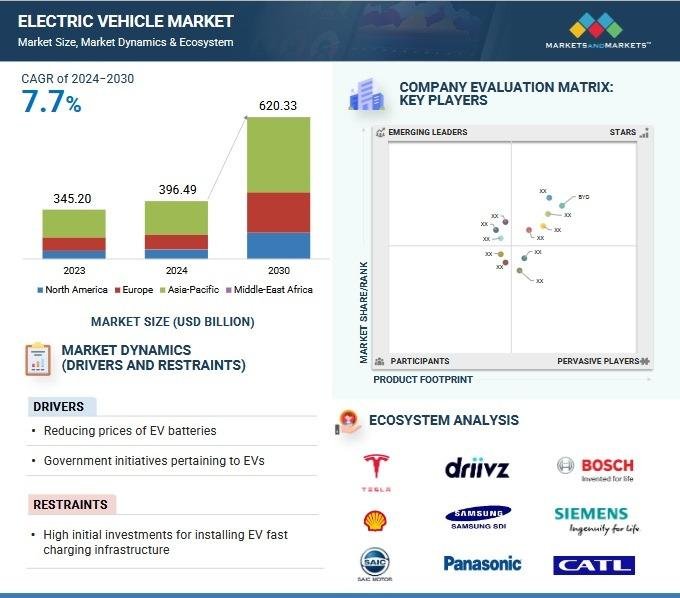Los Angeles, United State- QY Research announced the publication of a new research report, It sheds light on the global EV Current Sensor market. The research report is collated using primary and secondary research methodologies to provide the users with a precise analysis of the market dynamics. Analysts have used SWOT analysis and Porter’s five forces analysis for providing the readers with a detailed understanding of the influence of the various market dynamics. It answers questions pertaining to the present market size and its estimated valuation at the end of the forecast period. Furthermore, the report also includes an assessment of the segments in the global EV Current Sensor market to explain the progress of regional market over the forecast period.
The global market for EV Current Sensor was estimated to be worth US$ 853 million in 2024 and is forecast to a readjusted size of US$ 3246 million by 2031 with a CAGR of 20.4% during the forecast period 2025-2031.
Get PDF Sample Copy of Report: (Including Full TOC, List of Tables & Figures, Chart) https://www.qyresearch.in/request-sample/electronics-semiconductor-ev-current-sensor-global-market-share-and-ranking-overall-sales-and-demand-forecast-2025-2031
The increasing adoption of electric vehicles worldwide is a significant driver for the EV current sensor market. As governments and consumers prioritize sustainability and environmental concerns, there is a shift towards electric mobility, leading to a higher demand for EV current sensors.
With the expansion of EV charging infrastructure, there is a growing need for current sensors in charging stations. These sensors help monitor the power consumption, detect faults, and ensure safe and efficient charging. As the charging infrastructure continues to expand, the demand for EV current sensors in this segment is expected to rise.
The EV current sensor market is witnessing advancements in sensor technology, leading to more accurate and reliable current sensing solutions. This includes the development of Hall effect sensors, shunt resistors, and other innovative sensor technologies that offer improved precision, sensitivity, and efficiency.
Cost reduction and miniaturization are ongoing trends in the EV industry. Manufacturers are striving to develop compact, lightweight, and cost-effective current sensors without compromising performance and accuracy. This trend is driven by the need to optimize space utilization and reduce overall production costs.
Details of EV Current Sensor Market Segmentation: –
Segment by Key Manufacturers:
LEM
Allegro MicroSystems
Melexis
TDK Micronas
Honeywell
Robert Bosch
Kohshin Electric
DENSO
Continental
Nippon Ceramic
Infineon Technologies
CTS
Segment by Type
Hall-effect Sensor
Shunt Current Sensor
Other
Segment by Application
BEV
PHEV
HEV
In the successive chapters, the reports study the segments present in the global EV Current Sensor market. The market is segmented on the basis of application, type of product, service, and end users. Each of these segments have a dedicated chapter, which highlights the reasons for its progress and decline. Analysts have justified the reasons for the progress of each of these segments. The approach of end users, affordability, durability, and impact on business have been studied in great detail by analysts to understand the evolution of segments in the global EV Current Sensor market. Furthermore, the regional segment includes an explanation of factors that influence each regional market. Government policies and climate changes have been discussed in this part of the report.
What to expect in our report?
(1) A complete section of the EV Current Sensor market report is dedicated for market dynamics, which include influence factors, market drivers, challenges, opportunities, and trends.
(2) Another broad section of the research study is reserved for regional analysis of the global EV Current Sensor market where important regions and countries are assessed for their growth potential, consumption, market share, and other vital factors indicating their market growth.
(3) Players can use the competitive analysis provided in the report to build new strategies or fine-tune their existing ones to rise above market challenges and increase their share of the global EV Current Sensor market.
(4) The report also discusses competitive situation and trends and sheds light on company expansions and merger and acquisition taking place in the global EV Current Sensor market. Moreover, it brings to light the market concentration rate and market shares of top three and five players.
(5) Readers are provided with findings and conclusion of the research study provided in the EV Current Sensor Market report.
Unlock Exclusive Market Insights – Customize Your Research Report Now! https://www.qyresearch.in/pre-order-inquiry/electronics-semiconductor-ev-current-sensor-global-market-share-and-ranking-overall-sales-and-demand-forecast-2025-2031
Table of Content
1 Market Overview
1.1 EV Current Sensor Product Introduction
1.2 Global EV Current Sensor Market Size Forecast
1.2.1 Global EV Current Sensor Sales Value (2020-2031)
1.2.2 Global EV Current Sensor Sales Volume (2020-2031)
1.2.3 Global EV Current Sensor Sales Price (2020-2031)
1.3 EV Current Sensor Market Trends & Drivers
1.3.1 EV Current Sensor Industry Trends
1.3.2 EV Current Sensor Market Drivers & Opportunity
1.3.3 EV Current Sensor Market Challenges
1.3.4 EV Current Sensor Market Restraints
1.4 Assumptions and Limitations
1.5 Study Objectives
1.6 Years Considered
2 Competitive Analysis by Company
2.1 Global EV Current Sensor Players Revenue Ranking (2024)
2.2 Global EV Current Sensor Revenue by Company (2020-2025)
2.3 Global EV Current Sensor Players Sales Volume Ranking (2024)
2.4 Global EV Current Sensor Sales Volume by Company Players (2020-2025)
2.5 Global EV Current Sensor Average Price by Company (2020-2025)
2.6 Key Manufacturers EV Current Sensor Manufacturing Base and Headquarters
2.7 Key Manufacturers EV Current Sensor Product Offered
2.8 Key Manufacturers Time to Begin Mass Production of EV Current Sensor
2.9 EV Current Sensor Market Competitive Analysis
2.9.1 EV Current Sensor Market Concentration Rate (2020-2025)
2.9.2 Global 5 and 10 Largest Manufacturers by EV Current Sensor Revenue in 2024
2.9.3 Global Top Manufacturers by Company Type (Tier 1, Tier 2, and Tier 3) & (based on the Revenue in EV Current Sensor as of 2024)
2.10 Mergers & Acquisitions, Expansion
3 Segmentation by Type
3.1 Introduction by Type
3.1.1 Hall-effect Sensor
3.1.2 Shunt Current Sensor
3.1.3 Other
3.2 Global EV Current Sensor Sales Value by Type
3.2.1 Global EV Current Sensor Sales Value by Type (2020 VS 2024 VS 2031)
3.2.2 Global EV Current Sensor Sales Value, by Type (2020-2031)
3.2.3 Global EV Current Sensor Sales Value, by Type (%) (2020-2031)
3.3 Global EV Current Sensor Sales Volume by Type
3.3.1 Global EV Current Sensor Sales Volume by Type (2020 VS 2024 VS 2031)
3.3.2 Global EV Current Sensor Sales Volume, by Type (2020-2031)
3.3.3 Global EV Current Sensor Sales Volume, by Type (%) (2020-2031)
3.4 Global EV Current Sensor Average Price by Type (2020-2031)
4 Segmentation by Application
4.1 Introduction by Application
4.1.1 BEV
4.1.2 PHEV
4.1.3 HEV
4.2 Global EV Current Sensor Sales Value by Application
4.2.1 Global EV Current Sensor Sales Value by Application (2020 VS 2024 VS 2031)
4.2.2 Global EV Current Sensor Sales Value, by Application (2020-2031)
4.2.3 Global EV Current Sensor Sales Value, by Application (%) (2020-2031)
4.3 Global EV Current Sensor Sales Volume by Application
4.3.1 Global EV Current Sensor Sales Volume by Application (2020 VS 2024 VS 2031)
4.3.2 Global EV Current Sensor Sales Volume, by Application (2020-2031)
4.3.3 Global EV Current Sensor Sales Volume, by Application (%) (2020-2031)
4.4 Global EV Current Sensor Average Price by Application (2020-2031)
5 Segmentation by Region
5.1 Global EV Current Sensor Sales Value by Region
5.1.1 Global EV Current Sensor Sales Value by Region: 2020 VS 2024 VS 2031
5.1.2 Global EV Current Sensor Sales Value by Region (2020-2025)
5.1.3 Global EV Current Sensor Sales Value by Region (2026-2031)
5.1.4 Global EV Current Sensor Sales Value by Region (%), (2020-2031)
5.2 Global EV Current Sensor Sales Volume by Region
5.2.1 Global EV Current Sensor Sales Volume by Region: 2020 VS 2024 VS 2031
5.2.2 Global EV Current Sensor Sales Volume by Region (2020-2025)
5.2.3 Global EV Current Sensor Sales Volume by Region (2026-2031)
5.2.4 Global EV Current Sensor Sales Volume by Region (%), (2020-2031)
5.3 Global EV Current Sensor Average Price by Region (2020-2031)
5.4 North America
5.4.1 North America EV Current Sensor Sales Value, 2020-2031
5.4.2 North America EV Current Sensor Sales Value by Country (%), 2024 VS 2031
5.5 Europe
5.5.1 Europe EV Current Sensor Sales Value, 2020-2031
5.5.2 Europe EV Current Sensor Sales Value by Country (%), 2024 VS 2031
5.6 Asia Pacific
5.6.1 Asia Pacific EV Current Sensor Sales Value, 2020-2031
5.6.2 Asia Pacific EV Current Sensor Sales Value by Region (%), 2024 VS 2031
5.7 South America
5.7.1 South America EV Current Sensor Sales Value, 2020-2031
5.7.2 South America EV Current Sensor Sales Value by Country (%), 2024 VS 2031
5.8 Middle East & Africa
5.8.1 Middle East & Africa EV Current Sensor Sales Value, 2020-2031
5.8.2 Middle East & Africa EV Current Sensor Sales Value by Country (%), 2024 VS 2031
6 Segmentation by Key Countries/Regions
6.1 Key Countries/Regions EV Current Sensor Sales Value Growth Trends, 2020 VS 2024 VS 2031
6.2 Key Countries/Regions EV Current Sensor Sales Value and Sales Volume
6.2.1 Key Countries/Regions EV Current Sensor Sales Value, 2020-2031
6.2.2 Key Countries/Regions EV Current Sensor Sales Volume, 2020-2031
6.3 United States
6.3.1 United States EV Current Sensor Sales Value, 2020-2031
6.3.2 United States EV Current Sensor Sales Value by Type (%), 2024 VS 2031
6.3.3 United States EV Current Sensor Sales Value by Application, 2024 VS 2031
6.4 Europe
6.4.1 Europe EV Current Sensor Sales Value, 2020-2031
6.4.2 Europe EV Current Sensor Sales Value by Type (%), 2024 VS 2031
6.4.3 Europe EV Current Sensor Sales Value by Application, 2024 VS 2031
6.5 China
6.5.1 China EV Current Sensor Sales Value, 2020-2031
6.5.2 China EV Current Sensor Sales Value by Type (%), 2024 VS 2031
6.5.3 China EV Current Sensor Sales Value by Application, 2024 VS 2031
6.6 Japan
6.6.1 Japan EV Current Sensor Sales Value, 2020-2031
6.6.2 Japan EV Current Sensor Sales Value by Type (%), 2024 VS 2031
6.6.3 Japan EV Current Sensor Sales Value by Application, 2024 VS 2031
6.7 South Korea
6.7.1 South Korea EV Current Sensor Sales Value, 2020-2031
6.7.2 South Korea EV Current Sensor Sales Value by Type (%), 2024 VS 2031
6.7.3 South Korea EV Current Sensor Sales Value by Application, 2024 VS 2031
6.8 Southeast Asia
6.8.1 Southeast Asia EV Current Sensor Sales Value, 2020-2031
6.8.2 Southeast Asia EV Current Sensor Sales Value by Type (%), 2024 VS 2031
6.8.3 Southeast Asia EV Current Sensor Sales Value by Application, 2024 VS 2031
6.9 India
6.9.1 India EV Current Sensor Sales Value, 2020-2031
6.9.2 India EV Current Sensor Sales Value by Type (%), 2024 VS 2031
6.9.3 India EV Current Sensor Sales Value by Application, 2024 VS 2031
7 Company Profiles
7.1 LEM
7.1.1 LEM Company Information
7.1.2 LEM Introduction and Business Overview
7.1.3 LEM EV Current Sensor Sales, Revenue, Price and Gross Margin (2020-2025)
7.1.4 LEM EV Current Sensor Product Offerings
7.1.5 LEM Recent Development
7.2 Allegro MicroSystems
7.2.1 Allegro MicroSystems Company Information
7.2.2 Allegro MicroSystems Introduction and Business Overview
7.2.3 Allegro MicroSystems EV Current Sensor Sales, Revenue, Price and Gross Margin (2020-2025)
7.2.4 Allegro MicroSystems EV Current Sensor Product Offerings
7.2.5 Allegro MicroSystems Recent Development
7.3 Melexis
7.3.1 Melexis Company Information
7.3.2 Melexis Introduction and Business Overview
7.3.3 Melexis EV Current Sensor Sales, Revenue, Price and Gross Margin (2020-2025)
7.3.4 Melexis EV Current Sensor Product Offerings
7.3.5 Melexis Recent Development
7.4 TDK Micronas
7.4.1 TDK Micronas Company Information
7.4.2 TDK Micronas Introduction and Business Overview
7.4.3 TDK Micronas EV Current Sensor Sales, Revenue, Price and Gross Margin (2020-2025)
7.4.4 TDK Micronas EV Current Sensor Product Offerings
7.4.5 TDK Micronas Recent Development
7.5 Honeywell
7.5.1 Honeywell Company Information
7.5.2 Honeywell Introduction and Business Overview
7.5.3 Honeywell EV Current Sensor Sales, Revenue, Price and Gross Margin (2020-2025)
7.5.4 Honeywell EV Current Sensor Product Offerings
7.5.5 Honeywell Recent Development
7.6 Robert Bosch
7.6.1 Robert Bosch Company Information
7.6.2 Robert Bosch Introduction and Business Overview
7.6.3 Robert Bosch EV Current Sensor Sales, Revenue, Price and Gross Margin (2020-2025)
7.6.4 Robert Bosch EV Current Sensor Product Offerings
7.6.5 Robert Bosch Recent Development
7.7 Kohshin Electric
7.7.1 Kohshin Electric Company Information
7.7.2 Kohshin Electric Introduction and Business Overview
7.7.3 Kohshin Electric EV Current Sensor Sales, Revenue, Price and Gross Margin (2020-2025)
7.7.4 Kohshin Electric EV Current Sensor Product Offerings
7.7.5 Kohshin Electric Recent Development
7.8 DENSO
7.8.1 DENSO Company Information
7.8.2 DENSO Introduction and Business Overview
7.8.3 DENSO EV Current Sensor Sales, Revenue, Price and Gross Margin (2020-2025)
7.8.4 DENSO EV Current Sensor Product Offerings
7.8.5 DENSO Recent Development
7.9 Continental
7.9.1 Continental Company Information
7.9.2 Continental Introduction and Business Overview
7.9.3 Continental EV Current Sensor Sales, Revenue, Price and Gross Margin (2020-2025)
7.9.4 Continental EV Current Sensor Product Offerings
7.9.5 Continental Recent Development
7.10 Nippon Ceramic
7.10.1 Nippon Ceramic Company Information
7.10.2 Nippon Ceramic Introduction and Business Overview
7.10.3 Nippon Ceramic EV Current Sensor Sales, Revenue, Price and Gross Margin (2020-2025)
7.10.4 Nippon Ceramic EV Current Sensor Product Offerings
7.10.5 Nippon Ceramic Recent Development
7.11 Infineon Technologies
7.11.1 Infineon Technologies Company Information
7.11.2 Infineon Technologies Introduction and Business Overview
7.11.3 Infineon Technologies EV Current Sensor Sales, Revenue, Price and Gross Margin (2020-2025)
7.11.4 Infineon Technologies EV Current Sensor Product Offerings
7.11.5 Infineon Technologies Recent Development
7.12 CTS
7.12.1 CTS Company Information
7.12.2 CTS Introduction and Business Overview
7.12.3 CTS EV Current Sensor Sales, Revenue, Price and Gross Margin (2020-2025)
7.12.4 CTS EV Current Sensor Product Offerings
7.12.5 CTS Recent Development
8 Industry Chain Analysis
8.1 EV Current Sensor Industrial Chain
8.2 EV Current Sensor Upstream Analysis
8.2.1 Key Raw Materials
8.2.2 Raw Materials Key Suppliers
8.2.3 Manufacturing Cost Structure
8.3 Midstream Analysis
8.4 Downstream Analysis (Customers Analysis)
8.5 Sales Model and Sales Channels
8.5.1 EV Current Sensor Sales Model
8.5.2 Sales Channel
8.5.3 EV Current Sensor Distributors
9 Research Findings and Conclusion
10 Appendix
10.1 Research Methodology
10.1.1 Methodology/Research Approach
10.1.1.1 Research Programs/Design
10.1.1.2 Market Size Estimation
10.1.1.3 Market Breakdown and Data Triangulation
10.1.2 Data Source
10.1.2.1 Secondary Sources
10.1.2.2 Primary Sources
10.2 Author Details
10.3 Disclaimer
About US:
QYResearch is a leading global market research and consulting company established in 2007. With over 17 years’ experience and professional research team in various cities over the world QY Research focuses on management consulting, database and seminar services, IPO consulting, industry chain research and customized research to help our clients in providing non-linear revenue model and make them successful. We are globally recognized for our expansive portfolio of services, good corporate citizenship, and our strong commitment to sustainability.
Contact US
QY RESEARCH, INC.
17890 CASTLETON STREET
SUITE 369, CITY OF INDUSTRY
CA – 91748, UNITED STATES OF AMERICA
Web – https://www.qyresearch.in
Tel: +91-8149736330
Email- ankit@qyresearch.com
This release was published on openPR.









